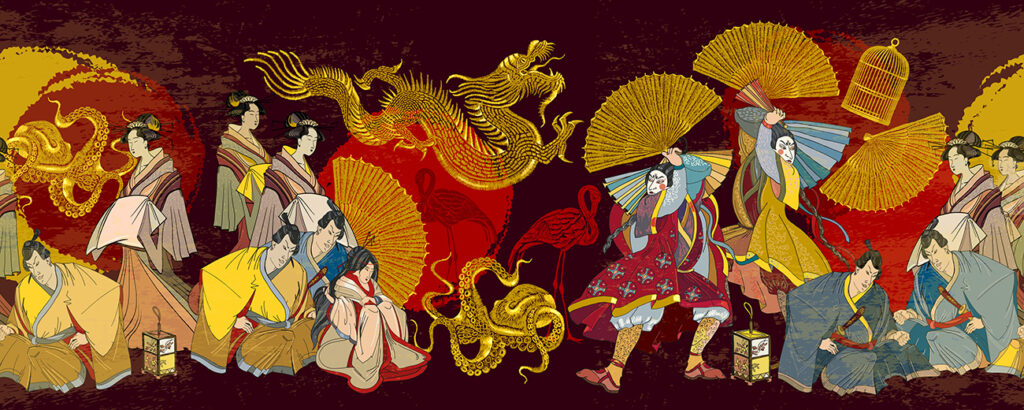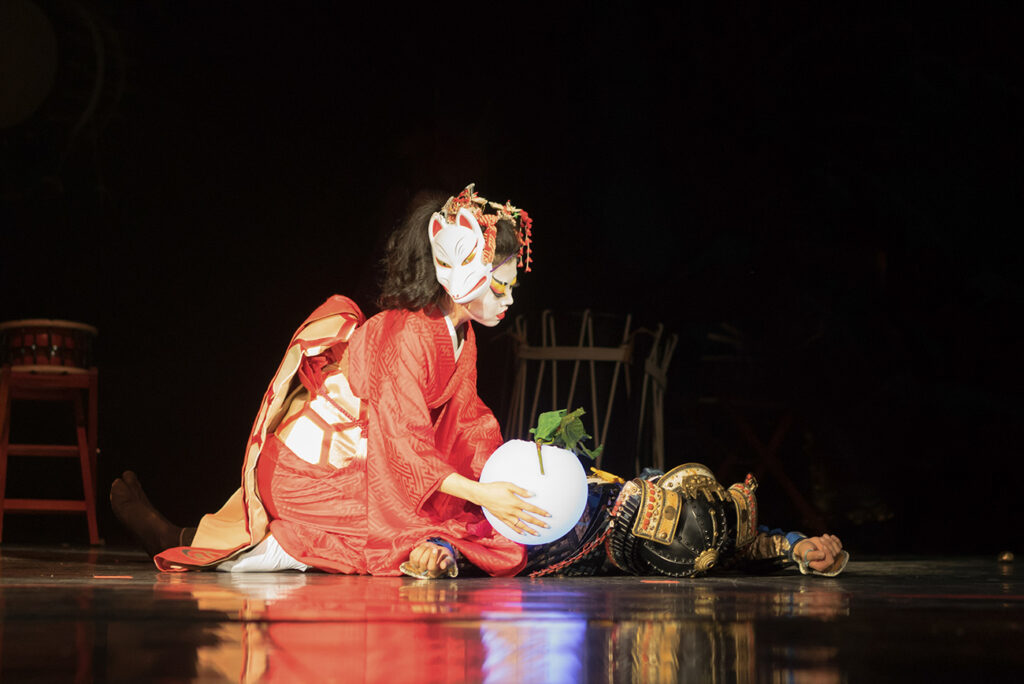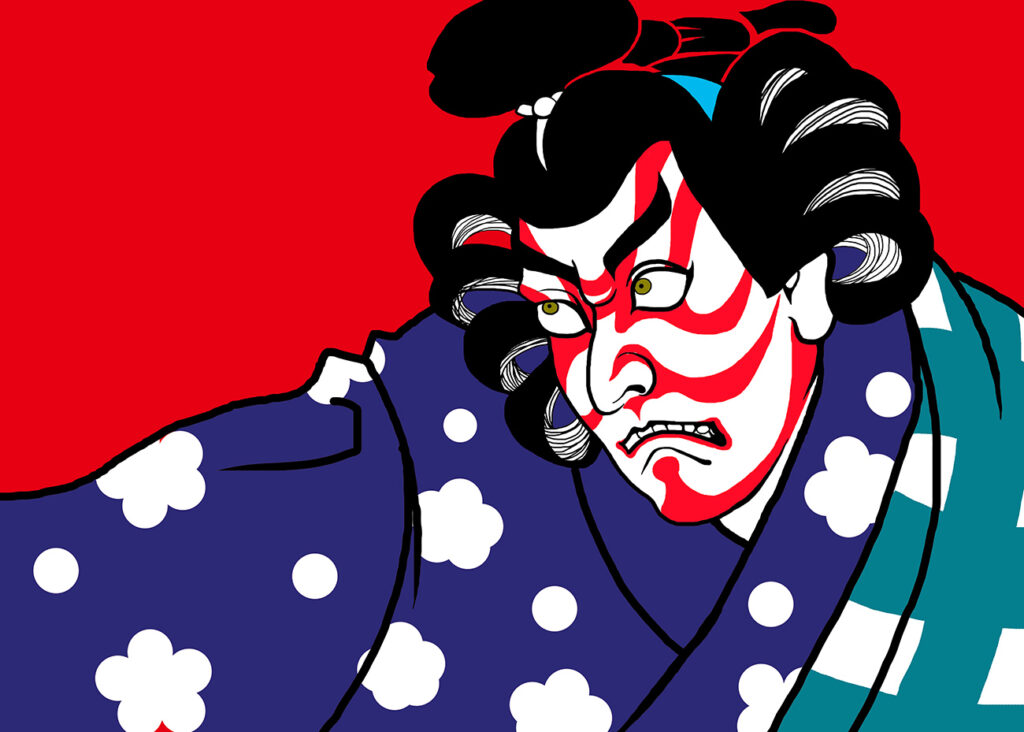
Izumo no Okuni: The Woman Behind Kabuki
Kabuki is regarded as a timeless gem within Japan’s rich theatrical tradition, celebrated for its vivid portrayal of the intricate tapestry of human emotions in everyday existence. Often described as “the art of singing and dancing,” Kabuki derives its name from the word “kabuku,” which signifies a departure from the ordinary. Consequently, this dance-drama is frequently characterized as “eccentric” or “avant-garde” theater.
Kabuki productions delve into the depths of emotions such as love, moral dilemmas, and historical narratives. Actors deliver their lines with deliberate monotony, their performances enriched by the harmonious accompaniment of traditional Japanese musical instruments like the shamisen and biwa. The heart of a Kabuki stage is the revolving platform known as “kabuki no butai,” featuring cleverly concealed trap doors that enable actors to appear and vanish suddenly. Complementing this unique setup are the iconic footbridges called “hanamichi,” designed to guide actors through the audience, enhancing the immersive experience.
In contemporary times, Kabuki continues to thrive as one of the foremost traditional dramatic art forms deeply rooted in Japanese culture. Many modern Kabuki actors extend their artistic prowess beyond the confines of the stage, gracing the worlds of cinema and television with their exceptional talents.
The talented miko
Izumo no Okuni (出雲 阿国, born c. 1578; died c. 1613) is remembered as a Japanese entertainer and shrine maiden credited with pioneering the art form of kabuki theatre. It is believed that she introduced this innovative blend of singing and dancing to the world of performance in the dry riverbed of the Kamo River in Kyoto.
Okuni’s artistic troupe swiftly garnered widespread acclaim, particularly for its diverse performers, many of whom were lower-class women recruited by Okuni herself for her all-female theatre company. Despite the limited availability of concrete information about her life, it is known that she hailed from the vicinity of Izumo Province. Prior to her artistic endeavors, she served as a miko (shrine maiden) at the Izumo-taisha, the Grand Shrine of Izumo.
Captivating the public
Her captivating dramatized dance performances, which she showcased under the name kabuki, captured the hearts of audiences. Okuni continued to mesmerize spectators with kabuki performances alongside her troupe until her eventual retirement and subsequent disappearance, believed to have occurred around the year 1610. Her passing is thought to have transpired approximately in 1613. Decades later, in the Edo Period (1629-1673,) women were prohibited from performing and yarō kabuki (cross-dressed male actors) took on the female roles.

